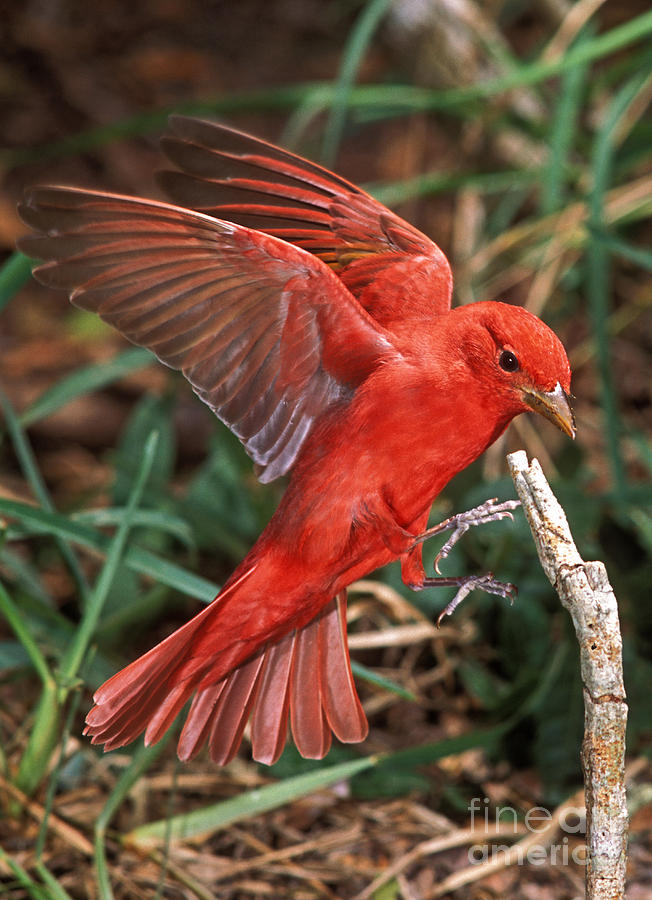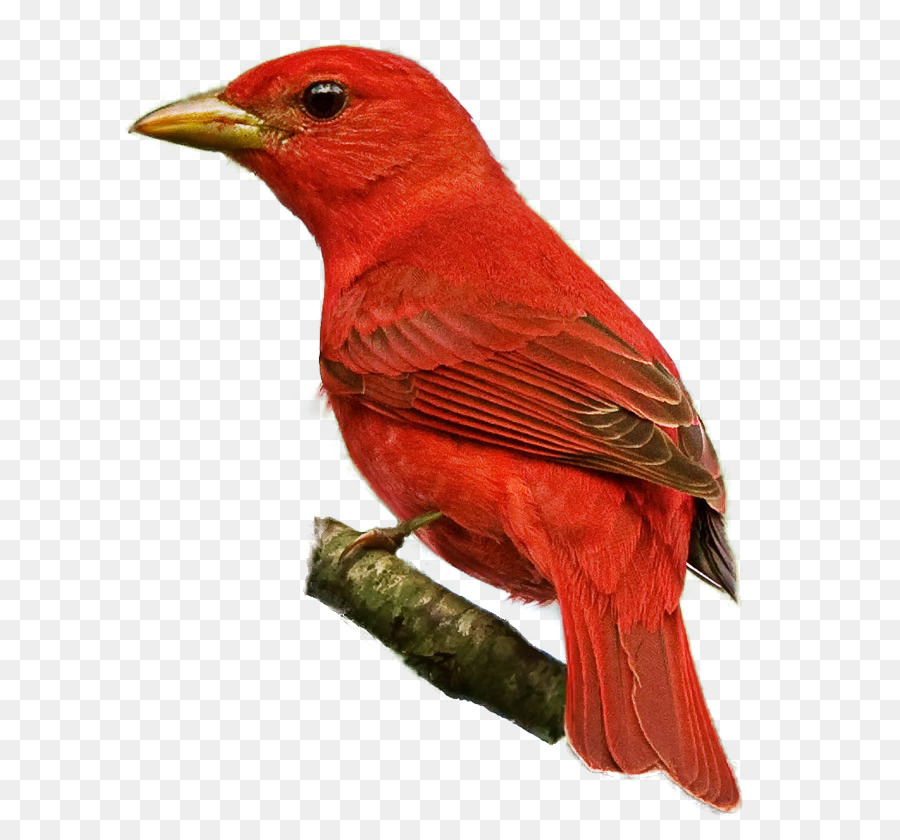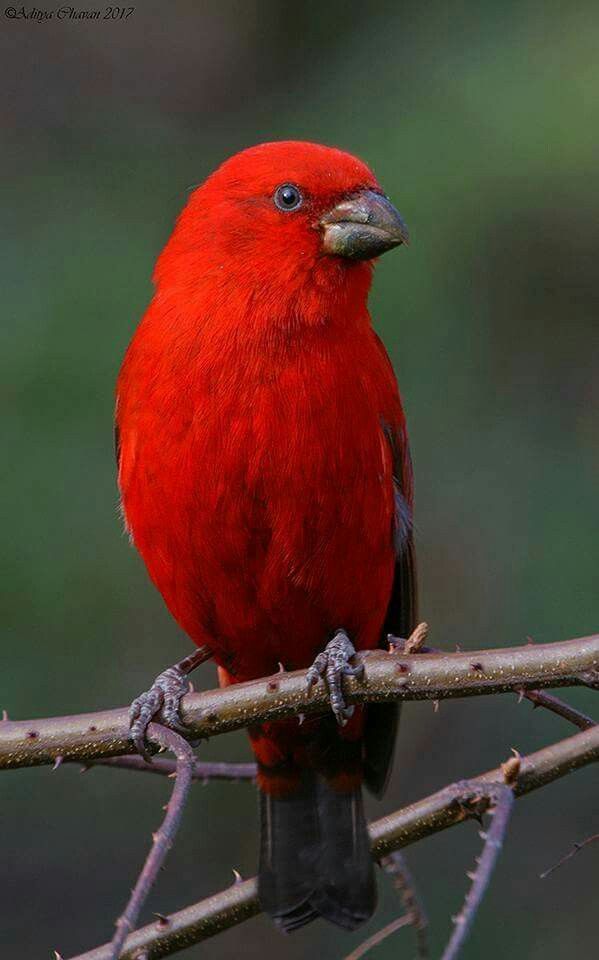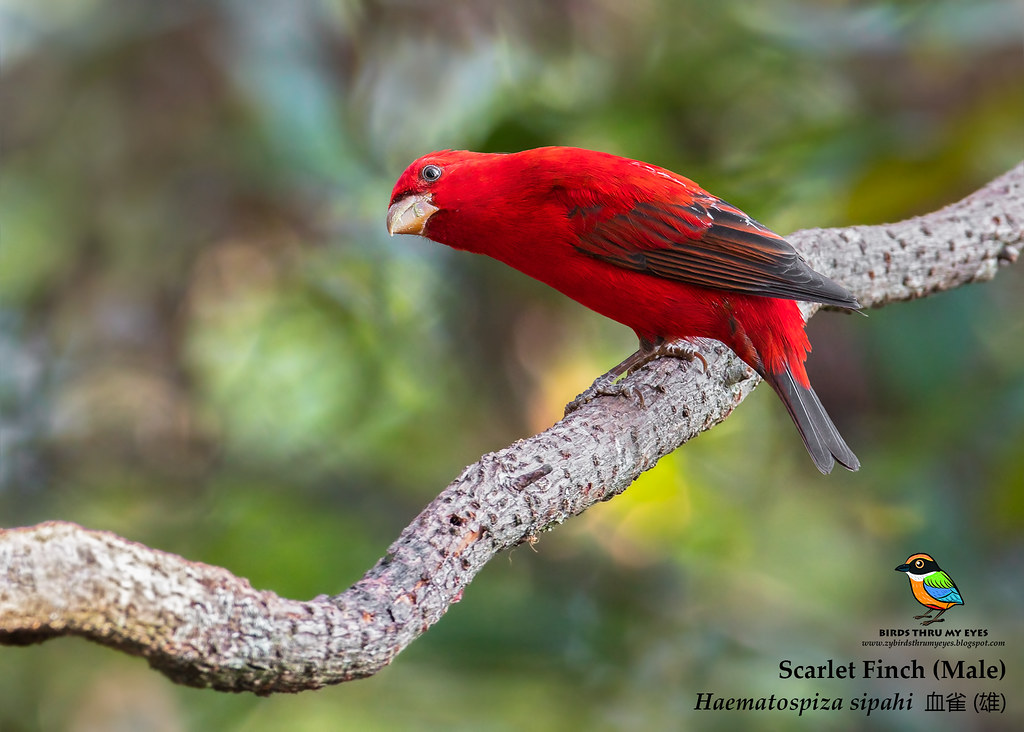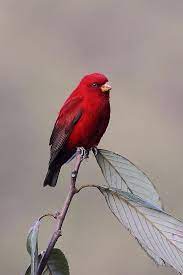Introducing the Striking Strawberry-Colored Bird: The Summer Tanager, a True Gem of North America!

Prepare to be mesmerized by the breathtaking beauty of the Summer Tanager, a bird that truly stands out in the avian world. Adorned in shades of rosy red to vibrant orange, this species is undoubtedly one of the most captivating birds found in North America.
The adult male Summer Tanagers boast an awe-inspiring radiant red plumage, while immature males showcase a subtle combination of dull yellow-olive with smudges of red. Females, on the other hand, exhibit a range of colors, varying from pale, muted yellow to lighter shades of orange.
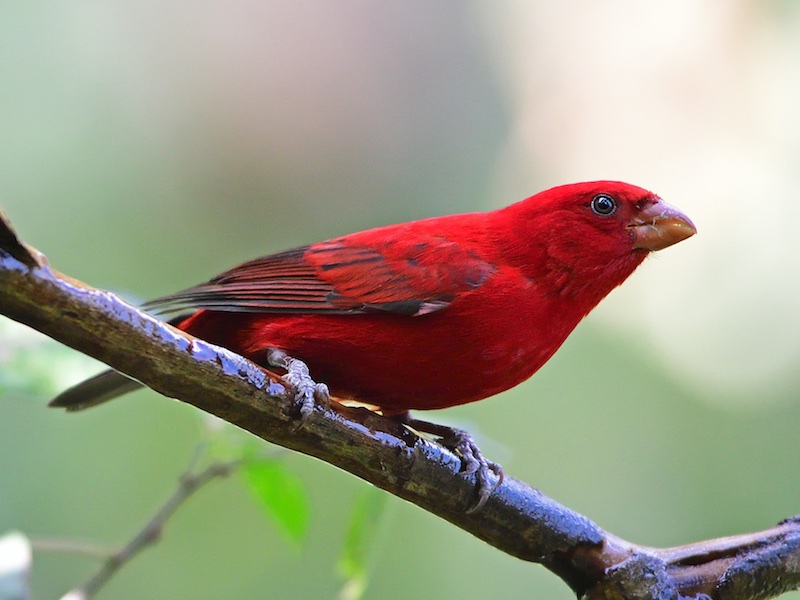
As the only completely red bird in North America, the Summer Tanager is a sight to behold, particularly when set against the lush green foliage of the woods. These birds breed once a year, raising a single brood during the summer season.
While they remain monogamous within each breeding season, Summer Tanagers typically do not maintain the same mate in successive seasons, exhibiting sequential monogamy.
Formerly classified in the tanager family, the Summer Tanager (Piranga rubra) is now grouped with other members of its genus in the Cardinal family, Cardinalidae. This medium-sized American songbird primarily inhabits open woodland areas, with a particular affinity for regions abundant in oak trees. Their diet primarily consists of honey bees and wasps, but they also indulge in other insects and occasionally feed on berries.
You’ll often find Summer Tanagers perched high in the forest canopy, patiently waiting to launch themselves into mid-air to catch flying insects. They also adeptly maneuver along tree branches to gather food at a leisurely pace.
The male Summer Tanagers maintain their radiant red plumage year-round, measuring about 6.7 inches in length. They can be distinguished from Scarlet Tanagers by their paler plumage, and notably, their wings are red rather than black.
Isn’t she a beauty?
Juvenile males bear a striking resemblance to females, displaying a vibrant yellow-green coloration with hints of yellow on the head and underparts, and a greener tone on the wings and back.
The general appearance of females is more olive above and orange-yellow below. Their wings and tail exhibit an olive-brown hue, while some females develop male-like pigmentation as they mature.
These eye-catching birds boast robust, thick bills with blunt tips.
The male Summer Tanager serenades its surroundings with a sweet, whistling tune reminiscent of the American Robin. Both males and females emit a distinctive pit-ti-tuck call, instantly recognizable to those familiar with their enchanting melodies.
Let’s build a nest!
During their breeding season, Summer Tanagers typically construct nests on horizontal branches, positioned between 2.5 to 10.5 meters above the ground. The female takes charge of nest-building duties, utilizing herbaceous vegetation and grass to create a cozy structure where she lays three to four eggs.
Sightseeing time…
Incubation responsibilities solely lie with the female, lasting approximately 12 to 13 days. During this period, the male may choose to care for the female or tend to his own plumage maintenance.
Once the chicks hatch, the male assumes an active role, assisting the female in feeding and attentively attending to their needs. After 8 to 10 weeks, the young fledglings leave the nest, embarking on their own remarkable journeys.
Don’t I look gorgeous?
Have a look…
Immerse yourself in the captivating presence of the Summer Tanager by watching and listening to their enchanting performance below:
The Summer Tanager can be found in the southern and eastern regions of the United States, extending southward from southern Pennsylvania and northern Illinois.
